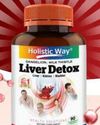
Everybody has an opinion. But in today’s digital age, opinions and beliefs are increasingly being masqueraded as facts. And there are people who are deliberately (as well as many more who are unknowingly) spreading such false information. It also does not help that there is an overwhelming amount of information to process every day. While the internet has made access to information much easier than ever before, it has also paved the way for the spread of misinformation and fake news like wildfire.
Therefore, it is now more important than ever to equip ourselves with the tools and knowledge to distinguish fact from fiction. Let us now further explore the dangers of misinformation and disinformation; the factors contributing to their spread; and practical strategies to protect ourselves against them.
MISINFORMATION AND DISINFORMATION
Misinformation refers to false or inaccurate information that is spread unintentionally or deliberately to manipulate people’s perceptions of reality. It can take many forms, including rumours, conspiracy theories, propaganda and deceptive advertising. On the other hand, disinformation is deliberately misleading or biased information, manipulated narratives or facts, and propaganda. It can take the form of authentic material deliberately used in the wrong context, imposter news sites designed to look like brands we already know, fake news sites, fake information, and manipulated content. The difference is in the intent, but both can be used as tools to influence public opinion and political outcomes, and cause harm to individuals and communities.
この記事は PRIME Singapore の PRIME Magazine | Jun-July 2024 版に掲載されています。
7 日間の Magzter GOLD 無料トライアルを開始して、何千もの厳選されたプレミアム ストーリー、9,000 以上の雑誌や新聞にアクセスしてください。
すでに購読者です ? サインイン
この記事は PRIME Singapore の PRIME Magazine | Jun-July 2024 版に掲載されています。
7 日間の Magzter GOLD 無料トライアルを開始して、何千もの厳選されたプレミアム ストーリー、9,000 以上の雑誌や新聞にアクセスしてください。
すでに購読者です? サインイン

A Picture of Health
Upcoming Healthcare Trends to Watch Out For in 2025

Queena Sparkle
Conversation with a CEO: Queen.Z Jewellery Founder and CEO Ms Queena Zhang

Back Pain! No Gain?
Tried Everything for Back Pain? Here is One Treatment You Might Have Missed.

A Bonding Experience
Pierce Brosnan Sets the Example on How to Transition to a Successful Post-Bond Career

The LASIK QuickStart Guide
Five Things Your Eye Surgeon Wants You to Know Before Going Under the Laser by: Dr Khor Wei Boon

Connectivity and Money Matters
In this final part of the Prime Essential Travel Tips series, we take a look at two key practicalities of overseas travel: staying connected and managing your money.

Liver Care Made Easy
Revitalise Your Health with Holistic Way Liver Detox

The Thyroid Puzzle
Have a Swollen Neck? Why Ignoring It Could Be a Silent Killer Lurking in Plain Sight

Resveratro
Nature's Antioxidant Powerhouse

The Thyroid Puzzle
Have a Swollen Neck? Why Ignoring It Could Be a Silent Killer Lurking in Plain Sight
